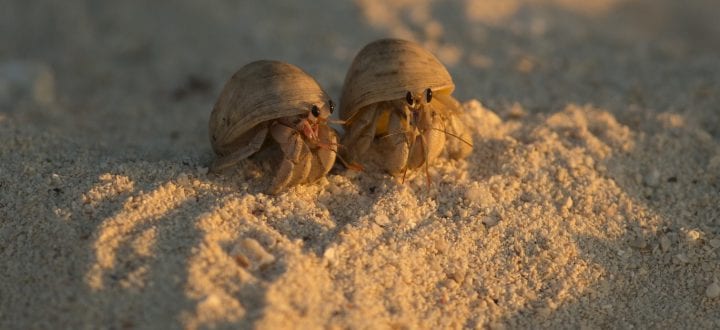UN Sustainable Development Goals Addressed
-

Goal 3: Good Health & Wellbeing
-

Goal 4: Quality Education
-

Goal 10: Reduced Inequalities
-

Goal 11: Sustainable Cities & Communities
2020 Global Design Challenge Honorable Mention
This design concept was developed by participants in the Institute’s Global Design Challenge. The descriptions below are from the team’s competition entry materials.
Location: Long Beach, CA, United States
Team members: Adrian Morlett, Andy Chi, Ashley Huynh, Eric Hoang, Noor Ali
Innovation Details
Approximately one in ten students at California State University Long Beach was “housing insecure” in 2019; having to resort to sleeping in cars, couchsurfing with friends, and even staying on the streets. CSULB operates an emergency housing program for students in immediate need, but it is not enough to accommodate everyone. Inspired by hermit crabs, prairie dogs and cactus, Nextep is a design for a prefabricated, collapsible, and portable housing unit that aims to ensure access to adequate, safe, and affordable housing for all.
What is the problem you are trying to solve and how is it related to the united nations sustainable development goals?
Everyone deserves the best chance at a fulfilling education. Between exams, working a job, and maintaining a social life, school can be a lot of work to manage. It is unimaginable that anyone would have to undertake these challenges while homeless, and yet that is the reality for an estimated 53,000 students – 10% of the California State University system student population. At our home of Cal. State Long Beach, one in ten students (over 3000) have been “housing insecure” in the past year; having to resort to sleeping in cars, couchsurfing with friends, and even staying on the streets. It is unacceptable that students – the nation and world’s future – may not know where they will sleep on a given night. Though the underlying causes are socio-economic and must be fixed through legislative reform, measures must be taken to alleviate these students’ burden in the short-term. CSULB operates an emergency housing program for students in immediate need, but it is not enough to accommodate everyone. Our solution is Nextep – a prefabricated, collapsible, and portable housing unit that aims to address the U.N. Sustainable Development Goal of ensuring access for all to adequate, safe, and affordable housing.
What organisms/natural systems did you learn from and how did what you learned inform your design?
We drew inspiration from the processes and adaptations of plants and animals to inform our design and its features. A passive ventilation system inspired by the burrows of prairie dogs circulates air with minimal reliance on electricity. Vents near the bottom of one end of the unit draw air inside, which travels through pressure and temperature differential up and out of an opposite vent in the ceiling. The Saguaro Cactus’s segmented body ensures that less of its body is exposed to sunlight and encourages heat dissipation through its heat sink-like ridges, which also expand to store water. This feature inspired our unit’s accordion-like expandable, heat-dissipating living space. When not in use, Nextep can be compressed down for easy transportation, relocation, or storage. Metaphorically, we drew inspiration from Hermit Crabs, who exhibit an unusual behavior. When hermit crabs have grown too large for their shells, they join a gathering of other crabs and arrange themselves by size from smallest to largest to upgrade shells. This inspired the attitude of our design; Nextep will aim to support students as they take the necessary steps to arrive at a stable situation that promotes success in their school life and beyond.
What does your design solution do? How does it address the problem or opportunity you selected?
Nextep is conscious of budget and space concerns. School campuses like Cal State Long Beach experience a shortage of both, and Nextep’s ability to make use of pre-existing infrastructure like parking lots and fields, as well as its flexibility to be easily collapsed, moved, and stored makes it an attractive possibility. The unit is set in place and expanded. The folded interior walls are lowered into position and set to create the flooring. The study desk and chair can then be raised from the floor panels, and a bed can be pulled down from the far wall. Students in need can apply to have a unit assigned to them for an appropriate period of time. At the end of a semester, school management can choose to collapse, move, or store the units as needed. Nextep’s affordability and adaptability will be more palatable to school administrations concerned about the budgetary bottom line, making more units available to students and more adequately addressing the staggering number of those in need.



